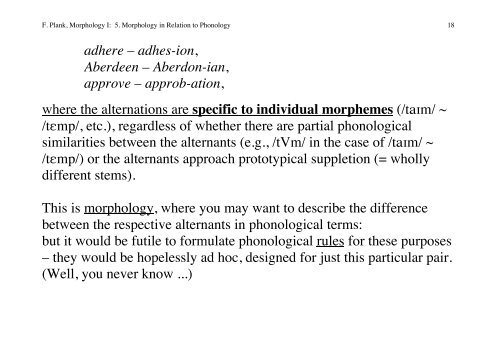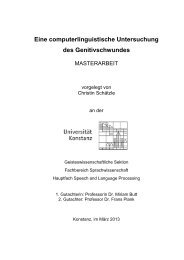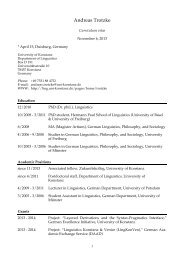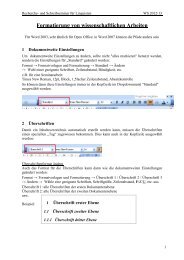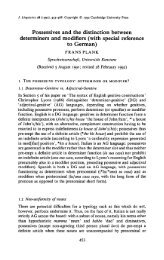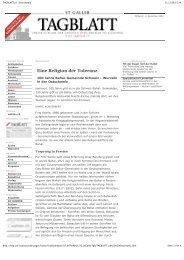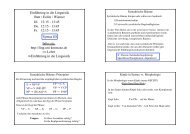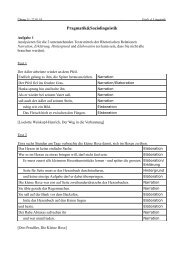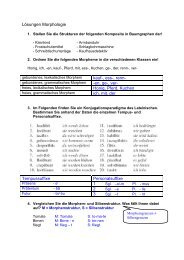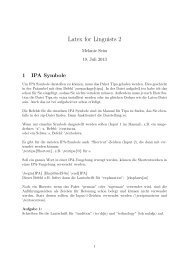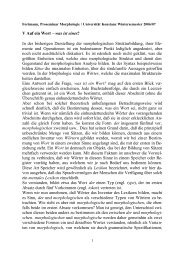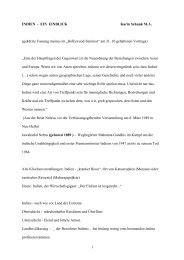5. Morphology in Relation to Phonology
5. Morphology in Relation to Phonology
5. Morphology in Relation to Phonology
Create successful ePaper yourself
Turn your PDF publications into a flip-book with our unique Google optimized e-Paper software.
F. Plank, <strong>Morphology</strong> I: <strong>5.</strong> <strong>Morphology</strong> <strong>in</strong> <strong>Relation</strong> <strong>to</strong> <strong>Phonology</strong> 18<br />
adhere – adhes-ion,<br />
Aberdeen – Aberdon-ian,<br />
approve – approb-ation,<br />
where the alternations are specific <strong>to</strong> <strong>in</strong>dividual morphemes (/taIm/ ~<br />
/tEmp/, etc.), regardless of whether there are partial phonological<br />
similarities between the alternants (e.g., /tVm/ <strong>in</strong> the case of /taIm/ ~<br />
/tEmp/) or the alternants approach pro<strong>to</strong>typical suppletion (= wholly<br />
different stems).<br />
This is morphology, where you may want <strong>to</strong> describe the difference<br />
between the respective alternants <strong>in</strong> phonological terms:<br />
but it would be futile <strong>to</strong> formulate phonological rules for these purposes<br />
– they would be hopelessly ad hoc, designed for just this particular pair.<br />
(Well, you never know ...)


